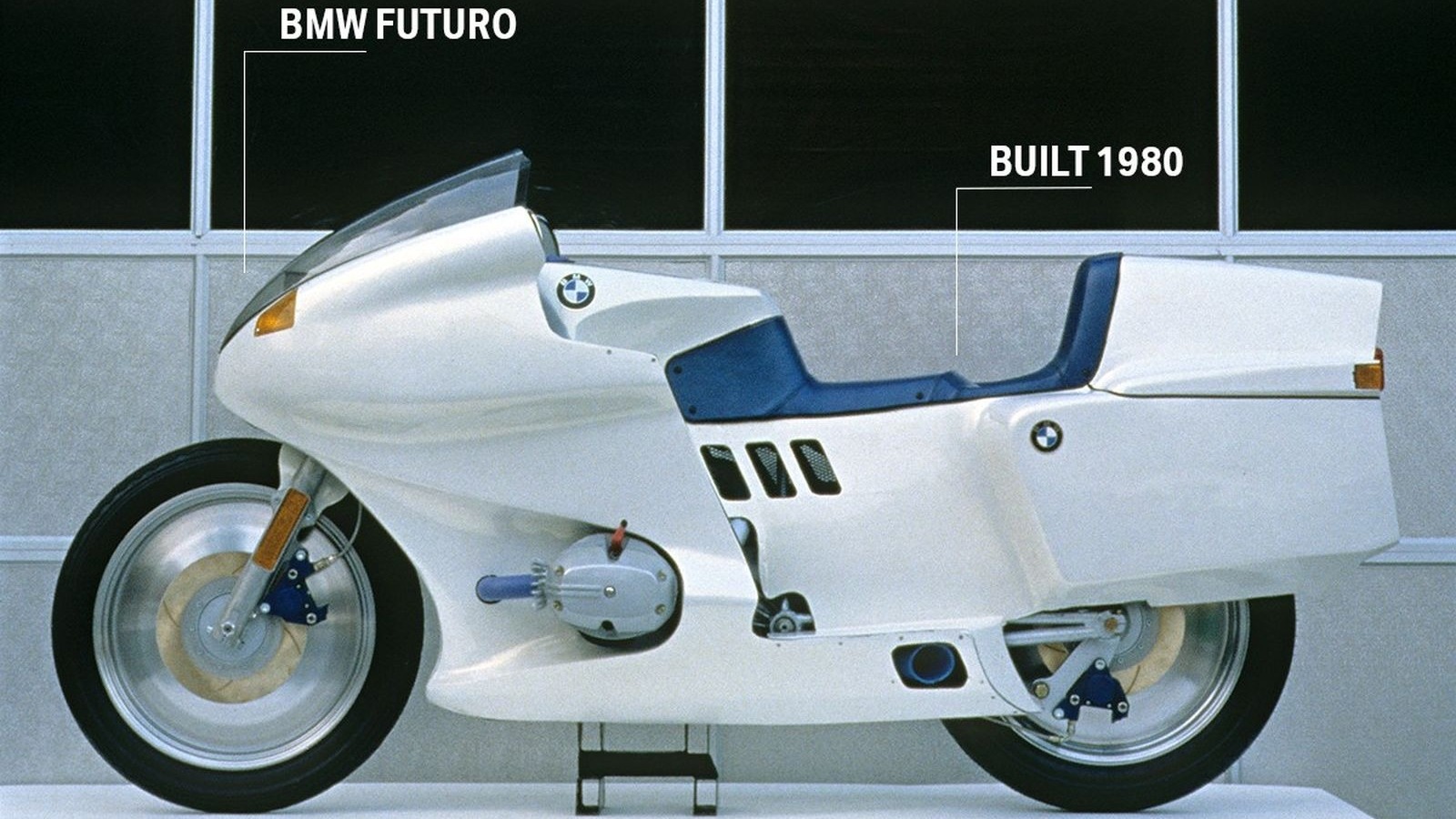
BWM was trying to show the world that its tried and true four-stroke, 785cc two-cylinder “Boxer” engine was still worthy by giving it a turbo add-on. This was a move that preceded the industry’s bandwagon jump to the turbo craze (via Visor Down), so it was a prescient decision. The Futuro had a top speed of 125 mph, but the most notable thing about the bike was its overall look and design.
The entirety of the bike was enclosed with a one-piece, aerodynamic fairing made of Kevlar carbon fiber — the first one of its kind. It was light enough to lift with one hand, yet firm and rigid enough to protect the bike and rider. By using Kevlar, the motorcycle only weighed 397 pounds in total. By comparison, the “average” weight of a bike is around 700 pounds, which is entirely dependent on the exact make and model.
Other unique features included complete disc wheels, a wraparound cowling, integrated rearview mirrors, and a rear trunk, which is said to have inspired Honda’s Pacific Coast motorcycle (via Moto-Collection). It also had a monocoque frame and parallelogram rear suspension that wouldn’t become a standard component on BMW bikes until 1987.
The final dash of “future” was the advanced computer-aided electronic information system, referred to as the “bi-directional multiplex system.” It not only kept the rider updated on standard bike functions (fuel, temp, speed, etc.) but also fed “the latest traffic news” to them.
The Futuro made only one appearance, but it made a big enough splash that some of its technological features left a lasting legacy on the industry.
Stay connected with us on social media platform for instant update click here to join our Twitter, & Facebook
We are now on Telegram. Click here to join our channel (@TechiUpdate) and stay updated with the latest Technology headlines.
For all the latest Technology News Click Here
